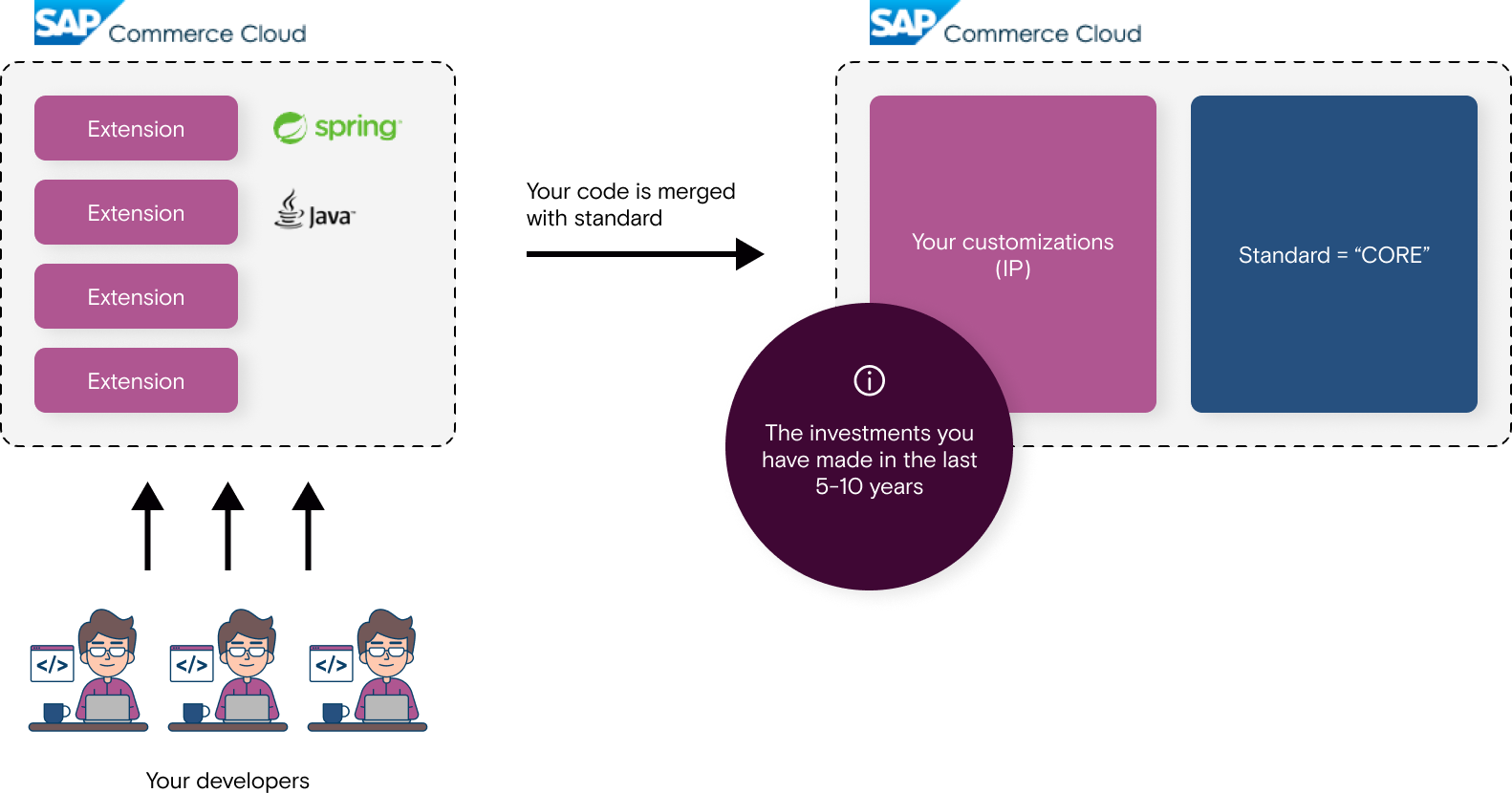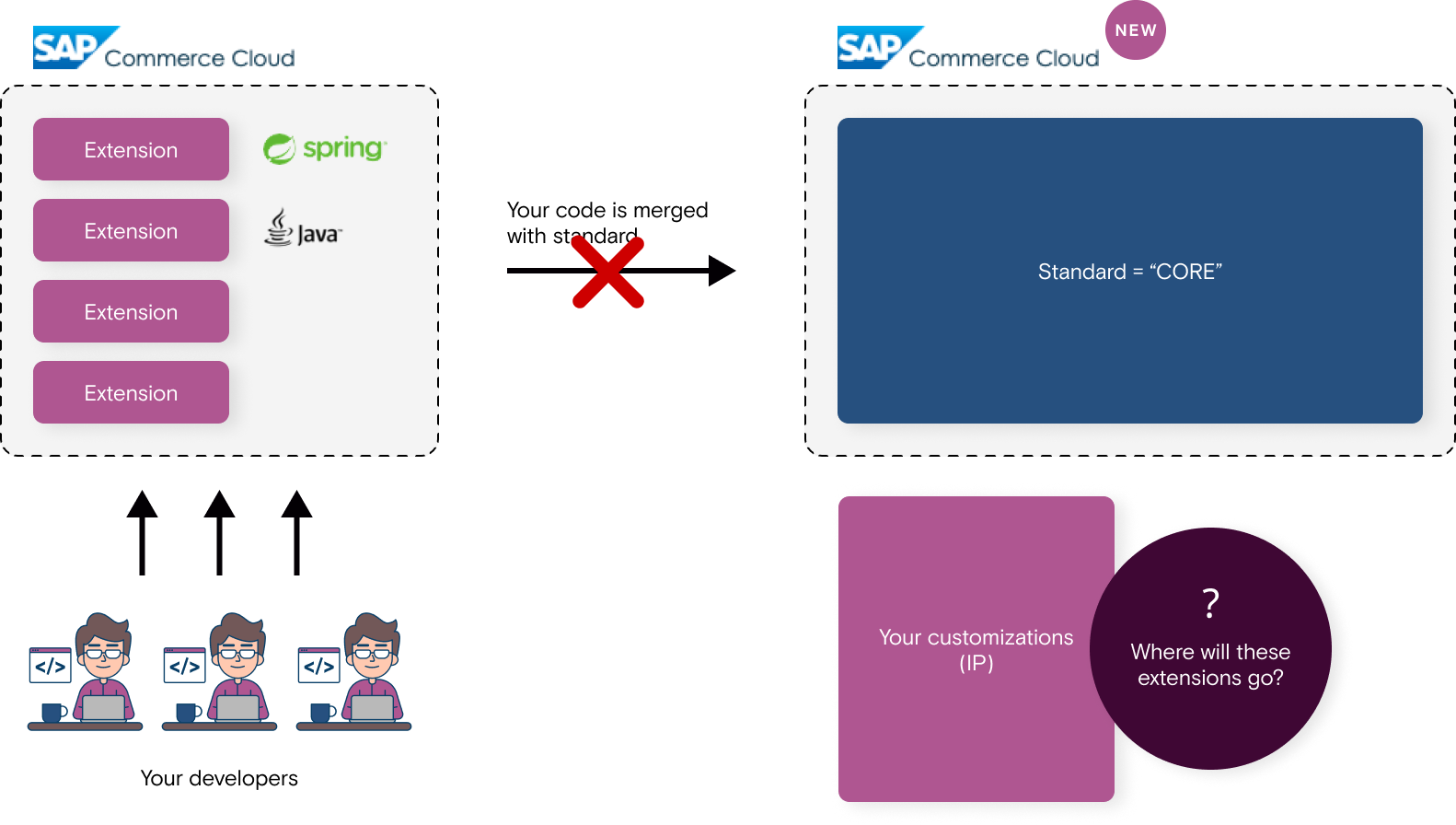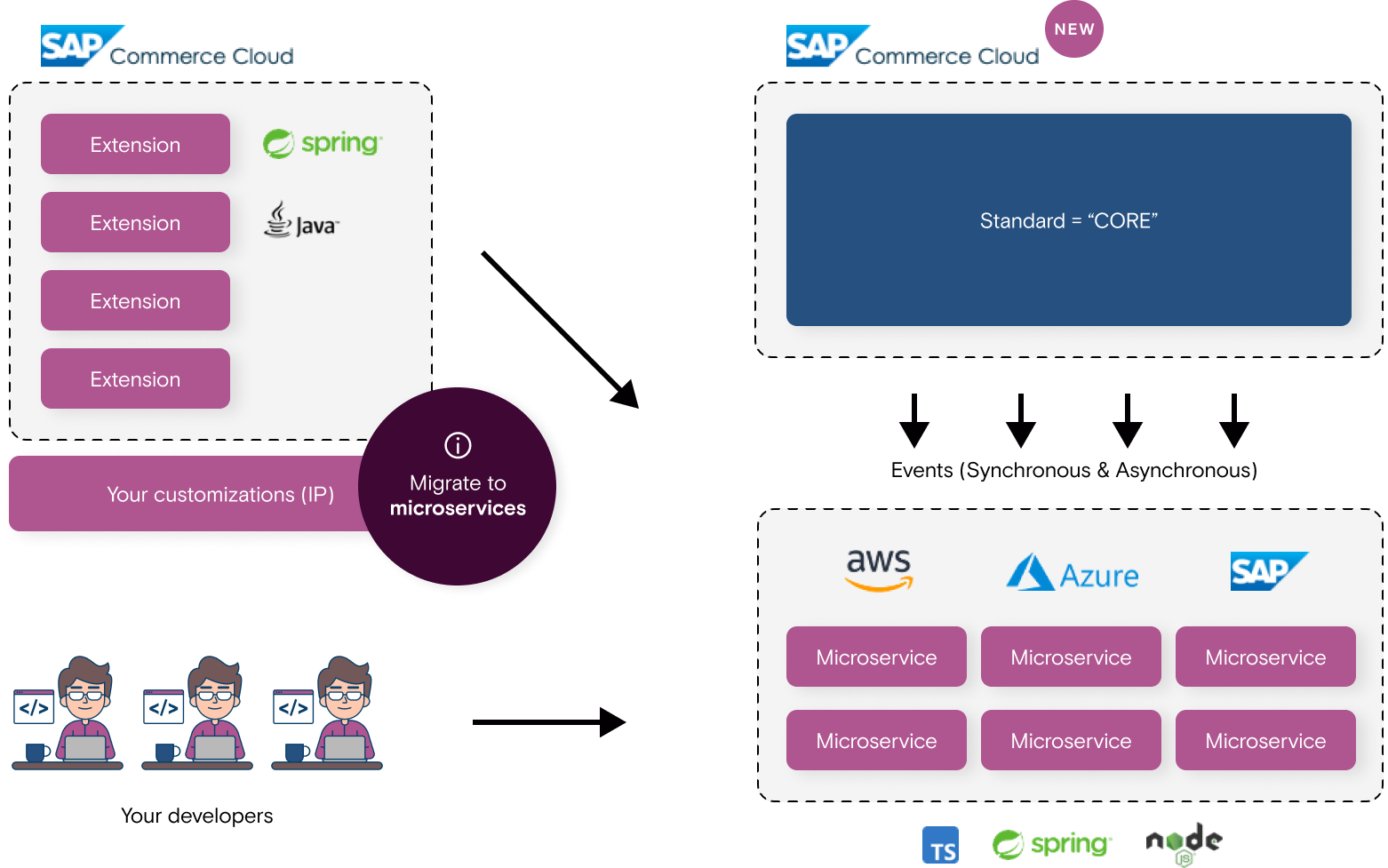Do you power your digital commerce using SAP Commerce Cloud? Have you heard about upcoming major roadmap changes and how it will affect you? If not, don’t worry we have you covered!
The main changes
SAP Commerce Cloud is a single-tenant commerce solution. Customers or partners have the possibility to extend the solution, by creating custom extensions, writing java code and adding spring extensions.
Usually, customers would have many java customizations, including many custom item types, custom integrations, custom APIs and other business-related changes.

Cloud native
In the future, SAP Commerce Cloud will be transforming towards true cloud-native solution. This would mean, that all further changes in the “core” would be restricted, including custom extension, java and spring configurations.

All new customizations will be expected to be done in the side-by-side manner in the microservice layer. You would be able to set-up your own microservice layer in the Hyperscalers (AWS, Azure,, GCP) or use SAP BTP.

How will this impact my business?
The old way of working will no longer be available. As changes in the SAP Commerce Cloud “core” will be restricted, customers/partners will no longer be allowed to write custom extensions / java classes.
This means that all changes made during the last couple of years will have to be moved outside SAP Commerce Cloud. We suggest our customers establish long-term architecture and shift towards it gradually (using a stranger pattern).
PearlConvert can share experience and advise you on how to do it, get in touch with us here.
Here are 5 key principles you should follow:
1. Migrate to Headless storefront
If not done yet, migrate away from Accelerators to Headless storefront. This could be Spartacus, Next.js, Vue or any other. We suggest also to establish BFF (backend-for-frontend) layer, where you would write your custom business logic.
2. Establish side-by-side extensibility layer
Establish microservice layer in Hyperscaler (AWS, Azure, GCP) or use SAP BTP. You will develop and deploy your microservices here.
3. Break the monolith – asynchronous processes
Move all asynchronous processes outside of SAP Commerce Cloud. Some examples include order confirmation email, integrations with ERP, various notifications, etc.
4. Break the monolith – synchronous processes
Plug in microservices to synchronous events in SAP Commerce Cloud. Some examples include live ATP in checkout, custom pricing in checkout, etc.
5. Avoid changes in the core
Try to avoid any changes in the SAP Commerce Cloud core – custom extensions, java classes, spring configurations. These changes will not be compatible with the future product and will require re-design and re-implementation.
Summing up
The upcoming changes will not only have technical impact, but will also impact on your team, their way of working, their competences and might event require organizational changes. And remember, all these changes don't require any big bang / greenfield approach and can be done gradually (in smaller steps).
We have done a similar transformation for several our customers, and focus on performing it gradually, consistently and painlessly. If you would like to learn more about upcoming roadmap changes or get any strategic advice, please contact us and we will get back to you!